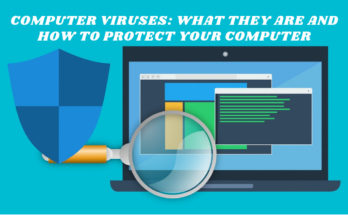DETECTING COMPUTER SOFTWARE ISSUES:-
There are several ways to detect software problems on a computer, and the exact steps may vary depending on the specific issue you are experiencing. Here are some general tips that can help you identify software problems:
I. Check for error messages: If you’re experiencing a problem, be on the lookout for any error messages that may pop up on your screen. These messages can provide important clues about what’s going wrong.
II. Run antivirus and malware scans: Some software problems may be caused by viruses or malware. Running a full system scan with a trusted antivirus software can help identify and remove any malicious software on your computer.
III. Check for updates: Many software issues can be resolved by installing the latest updates for your operating system and applications. Make sure to regularly check for updates and install them as soon as they become available.
IV. Try restarting your computer: Sometimes simply restarting your computer can resolve software problems. This can help refresh your system and clear out any temporary glitches that may be causing issues.
V. Use diagnostic tools: Your operating system may have built-in diagnostic tools that can help identify and resolve software problems. For example, in Windows, you can use the built-in System File Checker (SFC) tool to scan and repair corrupted system files.
VI. Check event logs: Operating systems typically maintain logs of events that occur on your computer. These logs can be a valuable resource for troubleshooting software issues. In Windows, you can view event logs by opening the Event Viewer tool.
If none of these steps resolve your software problem, you may need to seek help from a professional technician or the software vendor’s support team.
I. Check for error messages :-
Checking for error messages is a good first step in identifying software problems on your computer. Here’s how to check for error messages on Windows:
Look for any error messages that appear on your screen when you encounter a problem. Read the error message carefully and try to understand what it’s telling you.
If you’re not seeing any error messages on your screen, check the Event Viewer. To open the Event Viewer, press the Windows key + X and select “Event Viewer” from the menu.
In the Event Viewer window, expand the “Windows Logs” section and select “Application”. This will show you a list of all the events related to applications on your computer.
Look for any events with an “Error” level. Click on an event to see more details about the error, including the name of the application that generated it and the time it occurred.
Use the details in the error message to try to identify the cause of the problem. You may need to do some additional research online to figure out how to resolve the issue.
Note that error messages can be cryptic and difficult to interpret, especially if you’re not familiar with the software or system you’re using. If you’re having trouble understanding an error message or resolving a software problem, you may want to seek help from a professional technician or the software vendor’s support team.
II. Run antivirus and malware scan
Running antivirus and malware scans is another important step in detecting software problems on your computer. Here’s how to run a scan on Windows:
Make sure you have an antivirus program installed on your computer. If you don’t have one, you can download and install a free or paid antivirus software from a reputable provider.
Open your antivirus software and navigate to the “Scan” or “Scan now” option. This may be located on the home screen, in a menu, or in a separate tab.
Choose the type of scan you want to run. A quick scan will only scan the most commonly infected areas of your computer, while a full scan will scan your entire system for malware and viruses.
Start the scan and wait for it to complete. This may take several minutes or longer, depending on the size of your hard drive and the amount of data on it.
If the scan finds any malware or viruses, follow the prompts to remove or quarantine them. You may need to restart your computer to complete the removal process.
Note that antivirus and malware scans are not foolproof and may not detect all types of malware or viruses. It’s important to keep your antivirus software up to date and to practice safe browsing habits, such as not clicking on suspicious links or downloading files from untrusted sources. If you suspect that your computer is still infected with malware or viruses despite running a scan, you may need to seek help from a professional technician or the software vendor’s support team.
III. Check for updates
Checking for updates is another important step in detecting software problems on your computer. Here’s how to check for updates on Windows:
Click on the Start menu and select “Settings” (the gear icon).
Click on “Update & Security”.
Click on “Windows Update”.
Click on the “Check for updates” button. Windows will check for updates and let you know if any are available.
If updates are available, click on the “Download and install” button to install them. This may take some time, depending on the size of the updates and the speed of your internet connection.
Once the updates are installed, restart your computer if prompted to do so.
Note that installing updates can sometimes cause problems or conflicts with other software on your computer. If you experience any issues after installing updates, you may need to seek help from a professional technician or the software vendor’s support team. It’s also a good idea to create a system restore point before installing updates, so that you can revert your system to a previous state if necessary.
IV. Try restarting your computer
Restarting your computer is a simple but effective way to detect and resolve software problems. Here’s how to restart your computer on Windows:
Click on the Start menu.
Click on the power icon (usually located in the lower left corner of the screen).
Click on “Restart”.
Wait for your computer to shut down and then start back up again.
Once your computer has restarted, check to see if the software problem you were experiencing has been resolved.
Restarting your computer can help refresh your system and clear out any temporary glitches that may be causing issues. It’s a good idea to restart your computer regularly to help prevent software problems from occurring in the first place. If you find that restarting your computer doesn’t resolve the issue you’re experiencing, you may need to try some of the other troubleshooting steps we’ve discussed or seek help from a professional technician.
V. Use diagnostic tool
Using a diagnostic tool is another way to detect software problems on your computer. Windows has a built-in diagnostic tool called the “Windows Memory Diagnostic” that can help you identify problems with your computer’s memory. Here’s how to use it:
Click on the Start menu and type “Windows Memory Diagnostic” in the search bar.
Click on the “Windows Memory Diagnostic” option that appears.
In the dialog box that appears, select the option to “Restart now and check for problems (recommended)”.
Your computer will restart and the Windows Memory Diagnostic tool will run automatically.
Wait for the diagnostic tool to complete its scan. This may take several minutes or longer, depending on the size of your memory and the speed of your computer.
Once the scan is complete, the tool will report any problems it found with your computer’s memory.
Note that the Windows Memory Diagnostic tool is only designed to check for problems with your computer’s memory, and may not detect other types of software problems. There are other diagnostic tools available that can help you identify issues with other components of your computer, such as your hard drive or network adapter. If you’re not sure which tool to use or how to use it, you may need to seek help from a professional technician.
VI. Check event logs
Checking the event logs on your computer can also help you detect software problems. The event logs contain detailed information about events that occur on your computer, including errors and warnings related to software and hardware issues. Here’s how to check the event logs on Windows:
Click on the Start menu and type “Event Viewer” in the search bar.
Click on the “Event Viewer” option that appears.
In the Event Viewer window, navigate to “Windows Logs” in the left-hand pane.
Select the log you want to view. The “Application” log will contain events related to software, while the “System” log will contain events related to hardware and drivers.
Look for any errors or warnings in the log. These may be related to software problems on your computer.
Double-click on an event to view more information about it, including its date and time, source, and details.
Note that the event logs can be quite technical and may contain a lot of information that is difficult to understand. If you’re not sure what a particular event means or how to interpret it, you may need to seek help from a professional technician. Additionally, the event logs may not contain information about all software problems on your computer, so it’s important to use other methods of detecting issues as well.



